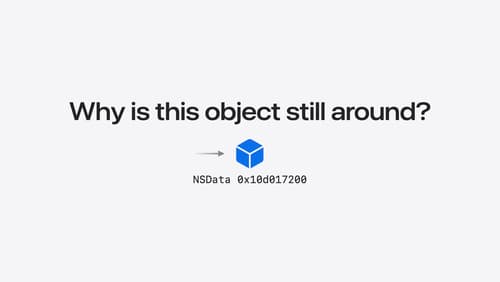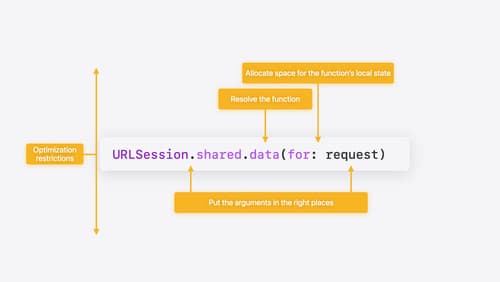deinit for non copyable type
Asked on 2025-01-20
7 searches
In Swift, non-copyable types are introduced to express unique ownership, which is particularly useful for managing resources like files. A non-copyable type can have a deinitializer (deinit) that automatically handles cleanup, such as closing a file. This helps prevent runtime issues like multiple writers to the same file or resource leaks.
For more details on non-copyable types and their usage, you can refer to the session What’s new in Swift (17:29) and Consume noncopyable types in Swift (07:05). These sessions cover the concept of non-copyable types, their implementation, and how they can be used in Swift 6.

Analyze heap memory
Dive into the basis for your app’s dynamic memory: the heap! Explore how to use Instruments and Xcode to measure, analyze, and fix common heap issues. We’ll also cover some techniques and best practices for diagnosing transient growth, persistent growth, and leaks in your app.

Explore Swift performance
Discover how Swift balances abstraction and performance. Learn what elements of performance to consider and how the Swift optimizer affects them. Explore the different features of Swift and how they’re implemented to further understand the tradeoffs available that can impact performance.

Consume noncopyable types in Swift
Get started with noncopyable types in Swift. Discover what copying means in Swift, when you might want to use a noncopyable type, and how value ownership lets you state your intentions clearly.
